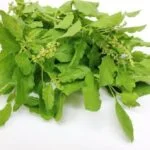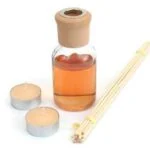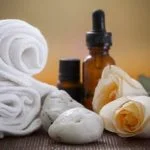Aromatherapy tea tree oil has gained immense popularity in recent years for its numerous benefits on the skin. This essential oil, derived from the leaves of the Melaleuca alternifolia plant native to Australia, is known for its powerful antibacterial and antifungal properties. But before diving into its potential applications on the skin, it is important to understand what it is and how it works.
Aromatherapy tea tree oil, also known simply as tea tree oil, is an essential oil that has been used for centuries by indigenous Australians for medicinal purposes. Its popularity has now spread worldwide due to its versatility and effectiveness in addressing various skin concerns. From acne to eczema, this powerhouse ingredient has become a go-to solution for many individuals seeking natural skincare remedies.
However, understanding the benefits of aromatherapy tea tree oil goes beyond simply knowing its popularity. In order to make informed decisions about whether or not to incorporate this oil into your skincare routine, it is crucial to explore the science behind it. By delving into the scientific research and expert opinions surrounding tea tree oil’s impact on the skin, you can gain a deeper understanding of how it works and its potential benefits.
Throughout this article, we will explore different aspects of aromatherapy tea tree oil usage on the skin. We will discuss its benefits and potential side effects, dive into the science behind this powerhouse ingredient, and provide expert tips for maximizing its effectiveness. So if you’re curious about whether or not you can use aromatherapy tea tree oil on your skin, keep reading to discover everything you need to know before making a decision.
What is Aromatherapy Tea Tree Oil
Aromatherapy tea tree oil, also known as melaleuca oil, is a powerful essential oil derived from the leaves of the tea tree plant. Native to Australia, this oil has gained popularity in recent years for its numerous health and skincare benefits. In this comprehensive overview, we will delve deeper into what exactly aromatherapy tea tree oil is and how it is produced.
Origin and Extraction Process
Tea tree oil is extracted through a steam distillation process from the leaves of the Melaleuca alternifolia tree. This evergreen shrub-like plant has narrow green leaves and white flowers. The leaves are harvested and then distilled in large vats of steam, causing the essential oil to evaporate. It is then collected and cooled down, resulting in the formation of refined tea tree oil.
Chemical Composition
The main chemical compounds found in aromatherapy tea tree oil are terpinen-4-ol, gamma-terpinene, and alpha-terpinene. Terpinen-4-ol is responsible for many of its therapeutic properties such as antimicrobial, antiseptic, and anti-inflammatory effects. The chemical composition of tea tree oil can vary depending on factors like where it is grown and how it is processed.
Historical Uses
Tea tree oil has been used by indigenous Australian Aboriginals for centuries due to its medicinal properties. They would crush the leaves of the tea tree plant to extract oils for their medicinal uses, including treating wounds and skin infections. Today, it remains a popular natural remedy for various skin conditions globally.
The Science Behind Tea Tree Oil and its Impact on the Skin
Tea tree oil is a popular essential oil that has gained significant attention in the world of skin care. This section will delve into the science behind tea tree oil and explain its impact on the skin, revealing why it is considered a powerhouse ingredient in skincare.
Tea tree oil, also known as melaleuca oil, is derived from the leaves of the Melaleuca alternifolia plant native to Australia. It is known for its powerful antibacterial, antifungal, and anti-inflammatory properties. These properties are primarily attributed to the presence of various bioactive compounds such as terpinen-4-ol, α-terpineol, and cineole.
When applied to the skin, tea tree oil works by penetrating deep into the pores and eliminating bacteria, fungi, and other microorganisms that can cause acne breakouts and skin infections. Its anti-inflammatory properties help soothe redness and inflammation associated with skin conditions like eczema and dermatitis.
Additionally, tea tree oil has been found to regulate sebum production. Excess sebum can lead to clogged pores and acne breakouts. By balancing sebum levels, tea tree oil helps maintain a clear complexion.
Using tea tree oil on the skin can also enhance wound healing. Studies have shown that it accelerates the formation of new tissue and minimizes scarring. This makes it an effective natural remedy for minor cuts, burns, and insect bites.
Safety First
Before incorporating aromatherapy tea tree oil into your skincare routine, it is important to consider some essential precautions to ensure your safety. While tea tree oil has numerous benefits for the skin, it is a potent ingredient that should be used with caution.
Firstly, it is crucial to always dilute tea tree oil before applying it to the skin. Pure tea tree oil can be too strong and may cause skin irritations or reactions. It is recommended to mix a few drops of tea tree oil with a carrier oil, such as coconut oil or jojoba oil, before applying it to the skin.
Additionally, it is advisable to perform a patch test before using tea tree oil on larger areas of the skin. This involves applying a small amount of diluted tea tree oil on a small patch of skin and observing for any adverse reactions. If there is no irritation or discomfort after 24 hours, it should be safe to use on a larger area.
Moreover, pregnant women and individuals with sensitive skin should exercise extra caution when using aromatherapy tea tree oil. Some studies suggest that high concentrations of tea tree oil may have hormonal effects and could potentially harm unborn babies. It is always best to consult with a healthcare professional before using any essential oils during pregnancy.
Lastly, keep in mind that everyone’s skin reacts differently to different products. If you experience any redness, itching, or irritation after using tea tree oil, discontinue use immediately and seek medical advice if necessary.
By following these essential precautions and considering your individual circumstances, you can safely incorporate aromatherapy tea tree oil into your skincare routine and reap its numerous benefits for the skin. Remember that safety always comes first when experimenting with new skincare products.
Understanding Different Skin Types
One important factor to consider when using aromatherapy tea tree oil on your skin is understanding the different skin types and how they may react to the oil. While tea tree oil is generally considered safe for most skin types, there are a few considerations to keep in mind.
Normal Skin
Normal skin types generally have a good balance of oil production and hydration. This type of skin is usually not excessively oily or dry. Aromatherapy tea tree oil can be used on normal skin types without major concerns, as long as it is properly diluted. However, it’s always a good idea to perform a patch test before applying it to larger areas of your skin.
Oily Skin
Oily skin tends to produce an excess amount of sebum, which can lead to clogged pores and acne breakouts. Aromatherapy tea tree oil can be particularly beneficial for individuals with oily skin due to its antibacterial properties. It helps control the excess oil production and prevents the accumulation of bacteria on the skin, reducing the likelihood of breakouts.
Dry Skin
Individuals with dry skin often experience discomfort and tightness due to lack of moisture in their skin. While tea tree oil can potentially help with certain dry skin issues such as acne or dandruff, it is important to use caution as it may further strip away natural oils and exacerbate dryness. It’s best to dilute tea tree oil with a carrier oil before using it on dry skin and monitor how your skin reacts.
Sensitive Skin
Sensitive skin types are more prone to irritation, redness, and inflammation. Tea tree oil may cause a reaction in individuals with sensitive skin, so it’s crucial to perform a patch test first. If you notice any signs of irritation or allergy after applying tea tree oil, it’s best to avoid using it on your skin.
In summary, while aromatherapy tea tree oil can be used on different skin types, it is important to understand your skin’s specific needs and potential sensitivities. Diluting the oil with a carrier oil and performing a patch test are good practices to ensure that your skin won’t have an adverse reaction to this powerful ingredient.
The Numerous Skin Benefits of Aromatherapy Tea Tree Oil
Aromatherapy tea tree oil offers a wide range of skin benefits, making it a popular ingredient in skincare products for conditions such as acne, eczema, and more. The natural properties of tea tree oil make it a versatile solution that can address various skin concerns.
One of the primary benefits of aromatherapy tea tree oil is its effectiveness in treating acne. Its antibacterial properties help to kill the bacteria that cause acne breakouts, reducing inflammation and preventing further breakouts. Tea tree oil also helps to unclog pores and reduce sebum production, helping to balance oily skin.
In addition to acne, aromatherapy tea tree oil has also shown promise in managing eczema. It contains anti-inflammatory compounds that can help soothe irritated skin and reduce redness and itching associated with eczema flare-ups. Furthermore, the antimicrobial properties of tea tree oil can aid in preventing bacterial or fungal infections on the skin, which may occur due to scratching or broken skin from eczema.
Moreover, tea tree oil is known for its ability to calm and soothe inflamed or irritated skin. Its natural properties help to alleviate redness, swelling, and discomfort associated with various skin conditions like psoriasis and rosacea. Tea tree oil’s moisturizing qualities also contribute to maintaining healthy and hydrated skin.
| Benefit | Data |
|---|---|
| Treating Acne | A study found that a gel containing 5% tea tree oil was effective in reducing acne lesions by 43%, while another study showed that it reduced acne severity by 66%. (Source: National Library of Medicine) |
| Managing Eczema | Research suggests that tea tree oil can help alleviate symptoms of eczema, including redness, itching, and inflammation. (Source: National Eczema Association) |
| Soothing Psoriasis | Psoriasis patients reported a reduction in scaling and itching after using tea tree oil-based products compared to a control group. (Source: International Journal of Dermatology) |
How to Use Aromatherapy Tea Tree Oil on Your Skin
Aromatherapy tea tree oil is a versatile ingredient that can be incorporated into your skincare routine. It offers numerous benefits for the skin, including treating acne, soothing inflammation, and reducing the appearance of scars. To ensure you use it effectively and safely on your skin, here is a step-by-step guide:
- Dilute the oil: Tea tree oil is highly concentrated and can cause skin irritation if used undiluted. Mix a few drops of tea tree oil with a carrier oil such as coconut oil or jojoba oil. The general rule of thumb is to use one part tea tree oil to nine parts carrier oil.
- Conduct a patch test: Before applying tea tree oil to your face or body, it’s essential to conduct a patch test. Apply a small amount of diluted tea tree oil to an inconspicuous area of your skin, like the inside of your elbow or behind your ear.
Wait for 24 hours and check for any redness, itching, or irritation. If there are no adverse reactions, you can proceed with using tea tree oil on your skin. - Cleanse your skin: Start with clean, dry skin before applying any skincare products. Use a gentle cleanser suitable for your skin type and pat dry with a clean towel.
- Spot treatment: If you want to target specific areas of concern such as acne breakouts or blemishes, dip a cotton swab into the diluted tea tree oil mixture and apply directly onto the affected area. Leave it on overnight and rinse off in the morning.
- Face mask: You can create a homemade face mask by mixing clay powder or honey with the diluted tea tree oil mixture until it forms a paste-like consistency. Apply the mask evenly over your face (avoiding the eye area) and leave it on for around 15-20 minutes before rinsing off with warm water.
- Moisturize: As the final step, apply a moisturizer suitable for your skin type to lock in hydration. This will prevent the tea tree oil from drying out your skin.
Remember, it’s important to start slow and gradually incorporate tea tree oil into your skincare routine. Overuse or using undiluted tea tree oil can cause dryness, redness, and further irritation. If you experience any adverse reactions such as excessive dryness or inflammation, discontinue use and consult a dermatologist.
Potential Side Effects and Sensitivities
Aromatherapy tea tree oil offers numerous benefits for the skin, but it is important to be aware of the potential side effects and sensitivities before incorporating it into your skincare routine. While generally considered safe, there are a few precautions to take into consideration.
- Allergies and Sensitivities: Tea tree oil is derived from the leaves of the Melaleuca alternifolia plant and can cause allergic reactions in some individuals. Before using tea tree oil on your skin, it’s recommended to do a patch test on a small area first.
Apply a diluted solution of tea tree oil to the inside of your forearm, and if you experience any redness, itching, or discomfort within 24 hours, avoid using it on your skin. - Irritation: Tea tree oil is a potent ingredient that can sometimes irritate the skin if not properly diluted. It’s important to always use tea tree oil in combination with a carrier oil like coconut oil or jojoba oil. This will help to minimize any potential irritation while still allowing you to reap its benefits.
- Dryness and Over-Drying: Tea tree oil has natural drying properties, which can be beneficial for acne-prone or oily skin types. However, for individuals with dry or sensitive skin, tea tree oil may cause excessive dryness and irritation. If you have a drier skin type, it’s best to use tea tree oil sparingly or consult with a dermatologist before incorporating it into your skincare routine.
- Children and Pets: Aromatherapy tea tree oil should never be used directly on children’s or pets’ skin as they are more sensitive to its effects. Always consult with a healthcare professional before using tea tree oil on children or pets.
Overall, when used properly and in moderation, aromatherapy tea tree oil can provide excellent benefits for the skin without causing significant side effects or sensitivities. It’s essential to be aware of your skin type, perform a patch test, dilute the oil correctly, and discontinue use if any adverse reactions occur. By following these precautions, you can safely incorporate tea tree oil into your skincare routine and enjoy its numerous benefits for your skin.
Recommendations and Best Practices
As with any skincare product, it is important to follow expert recommendations and best practices when using aromatherapy tea tree oil on your skin. These tips can help you maximize the benefits of this powerful essential oil while minimizing the risk of potential side effects or sensitivities.
- Dilute the oil: Tea tree oil is highly concentrated and potent, so it is crucial to dilute it before applying it to your skin. Most experts recommend mixing one part tea tree oil with nine parts carrier oil, such as coconut oil or jojoba oil. This dilution helps to prevent skin irritation and allows for safe application.
- Perform a patch test: Before using aromatherapy tea tree oil on larger areas of your skin, it is recommended to perform a patch test. Apply a small amount of diluted tea tree oil to a discreet area, such as the inside of your wrist or behind your ear. Wait for 24 hours and observe any adverse reactions or sensitivities. If there are no negative reactions, then you can proceed with using the oil on your skin.
- Spot treat blemishes: Aromatherapy tea tree oil is well-known for its effectiveness in treating acne and blemishes. Instead of applying it all over your face, use a cotton swab or clean fingertip to dab a small amount directly onto individual pimples or spots. This targeted approach can help reduce inflammation and promote healing without drying out the rest of your skin.
| Carrier Oil | Benefits |
|---|---|
| Coconut Oil | Moisturizes and nourishes the skin, has antimicrobial properties |
| Jojoba Oil | Soothes and balances the skin, suitable for all skin types |
| Grapeseed Oil | Lightweight and non-greasy, absorbs quickly into the skin |
| Almond Oil | Softens and hydrates the skin, rich in vitamin E |
By following these recommendations and best practices, you can safely incorporate aromatherapy tea tree oil into your skincare routine and enjoy its numerous benefits. Remember that everyone’s skin is unique, so it is essential to listen to your body and adjust the usage accordingly. If you have any concerns or doubts, it is always a good idea to consult with a dermatologist or skincare professional before starting any new skincare regimen.
Final Thoughts
In conclusion, aromatherapy tea tree oil can be a valuable addition to your skincare routine, but it is important to consider several factors before incorporating it into your regimen. Throughout this article, we have explored the popularity and benefits of aromatherapy tea tree oil, its impact on the skin, and its numerous skin benefits. We have also discussed precautions, guidance on how to use it effectively, potential side effects, and recommendations for maximizing its benefits.
When deciding whether aromatherapy tea tree oil is suitable for your skin type and needs, it is crucial to consult with a dermatologist or skincare professional. They can assess your specific skin condition and provide expert advice tailored to your individual requirements. It is especially important for those with sensitive or reactive skin to proceed with caution when using essential oils like tea tree oil.
It is also worth noting that while aromatherapy tea tree oil has shown promise in addressing various skin concerns such as acne, eczema, and inflammation, results may vary from person to person. Patience and consistency are key when introducing any new skincare product into your routine.
Frequently Asked Questions
Is aromatherapy tea tree oil safe for skin?
Aromatherapy tea tree oil is generally considered safe for the skin when used properly and in diluted form. Tea tree oil has natural antimicrobial properties, making it effective in treating acne, fungal infections, and other skin conditions.
However, it is important to note that some individuals may be allergic or sensitive to tea tree oil, so a patch test should be conducted before applying it to larger areas of the skin. Additionally, undiluted or concentrated tea tree oil can cause irritation or burning sensations on the skin, so it is crucial to dilute it with a carrier oil like coconut or jojoba oil before use.
Are aromatherapy oils safe for skin?
Aromatherapy oils can be safe for the skin when used appropriately and in the right concentration. However, not all essential oils are suitable for direct application to the skin as they can cause irritation or other adverse reactions. It is essential to consider each individual’s sensitivity and conduct a patch test before using any aromatherapy oil on the skin.
Dilution with a carrier oil is also recommended to reduce the risk of adverse effects. Different oils have different properties and uses, so it’s crucial to research their specific safety guidelines before applying them topically.
Can you use tea tree oil from diffuser on skin?
While tea tree essential oil can be used topically on the skin, caution should be exercised when using tea tree oil from a diffuser directly on the skin. Generally, diffuser oils are primarily designed for inhalation rather than direct contact with the skin.
The concentrations of essential oils used in diffusers are typically higher than what is recommended for topical use due to dilution with water or another medium in the diffuser device. Therefore, it is best to apply tea tree oil intended for skincare directly onto the skin after proper dilution rather than relying on using diffused tea tree oil on the skin directly from a diffuser.

Are you looking for a natural way to improve your health and wellbeing?
If so, aromatherapy may be the answer for you.





